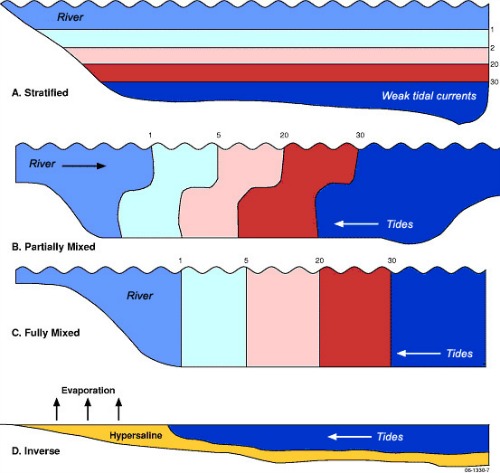When river flow drives mixing in estuaries and where tidal currents and waves are not strong enough to mix the water column, the freshwater flows over seawater causing stratification and is categorized as a salt-wedge estuary (Montagna et al. 2013). A partially mixed estuary is when tides drive the mixing in a partially mixed estuary causing some stratification of bottom saltwater and top freshwater with gradient variation at different areas of the estuary (Montagna et al. 2013). A well-mixed estuary is when wind drives the mixing in a well-mixed estuary and there is a salinity gradient that increases from the river to the estuary (Montagna et al. 2013). Inverse estuaries occur when evaporation exceeds the amount of freshwater inflows leading to hyper-saline conditions (Montagna et al. 2013). The water in the estuary becomes dense with salt and sinks to the bottom. The less dense seawater flows into the estuary from the sea or ocean on top of this layer. An estuary can take any of these salinity zones depending on the time of year and location of the estuary.
As discussed earlier, the characteristic types of salinity distributions in estuaries often depend on the driving force that mixes the estuary and includes: salt-wedge, partially mixed, well mixed, and inverse.
